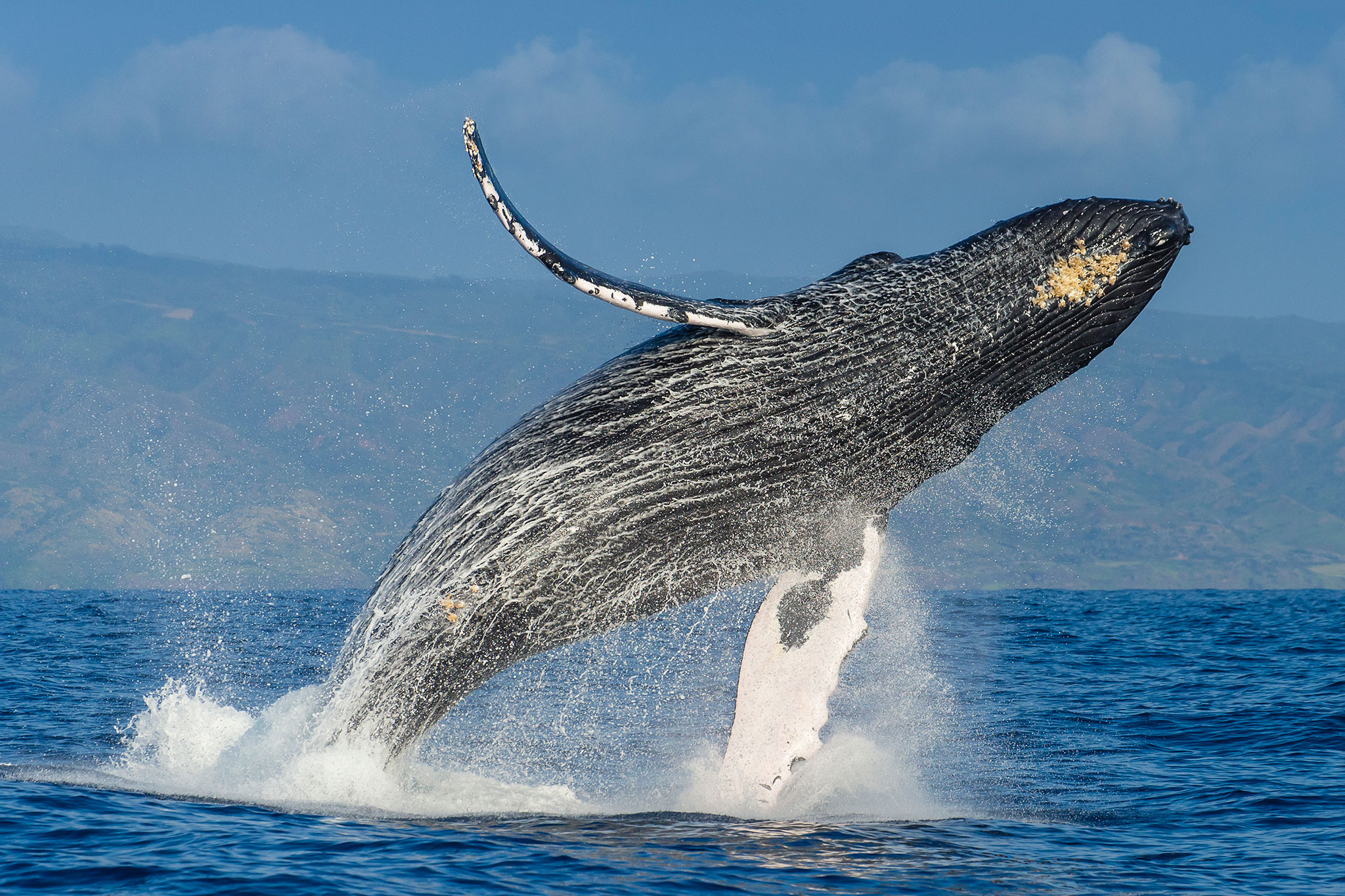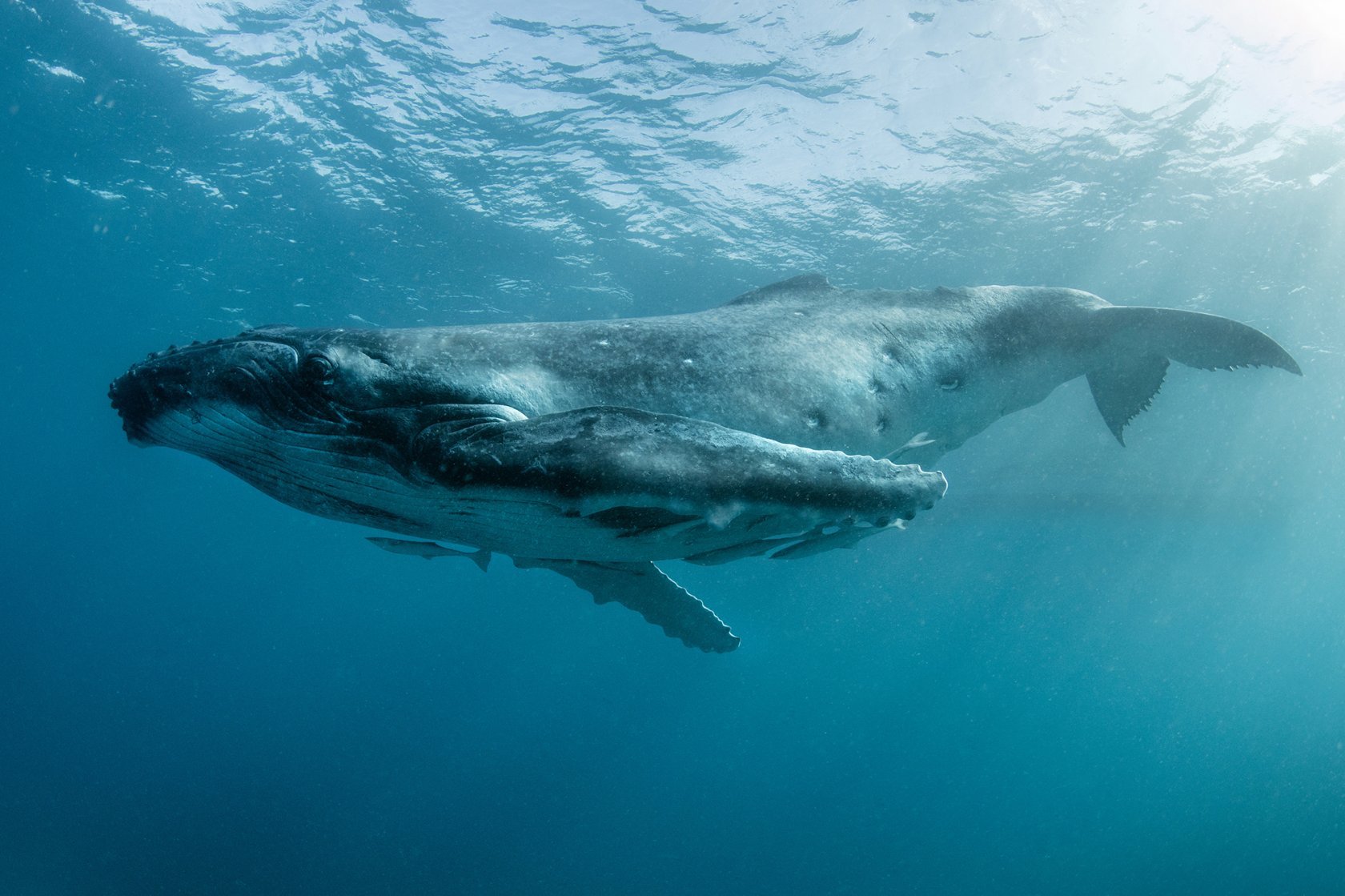
The humpback whale, scientifically known as Megaptera novaeangliae, is a magnificent marine mammal that belongs to the baleen whale family. These gentle giants are celebrated for their awe-inspiring acrobatics, haunting songs, and impressive migrations across vast oceanic expanses.
Humpback whales are renowned for their distinctive physical features, including their massive size, elongated pectoral fins, and pronounced hump on their backs, from which they derive their name. Their bodies are typically dark gray or black on their dorsal side, with mottled patterns and white undersides.

One of the most remarkable traits of humpback whales is their haunting vocalizations, which are considered one of the most complex forms of communication among non-human animals. These intricate songs can last for hours and are thought to play a role in mating rituals and social bonding.
Humpback whales are found in oceans worldwide, from polar regions to tropical waters, although they tend to migrate to warmer waters during the breeding season. Their migratory journeys can span thousands of miles, making them one of the most traveled species on the planet.

These majestic creatures are filter feeders, primarily consuming small fish, krill, and plankton by engulfing large volumes of water and then filtering out their prey using their baleen plates. Despite their enormous size, humpback whales are remarkably agile, often engaging in acrobatic displays such as breaching, where they leap out of the water, and slapping their fins or tails against the surface.
Humpback whales are known for their complex social structures, often forming loose-knit groups called pods. These pods can consist of a few individuals or dozens, and they may come together for feeding, mating, or other social activities.

The lifespan of humpback whales is estimated to be around 50 years or more in the wild, although they face numerous threats from human activities, including entanglement in fishing gear, ship strikes, pollution, and habitat degradation.
Conservation efforts are underway to protect humpback whales and their habitats, including the establishment of marine protected areas, regulations on whale watching activities, and efforts to reduce bycatch in fisheries.
Humpback whales play a crucial role in marine ecosystems as apex predators and ecosystem engineers, helping to regulate the populations of their prey species and contributing to nutrient cycling through their fecal plumes.

The study of humpback whales provides valuable insights into marine biology, ecology, and behavior, helping scientists better understand the interconnectedness of marine ecosystems and the impacts of human activities on marine life.
Researchers use various methods to study humpback whales, including photo-identification, satellite tagging, acoustic monitoring, and genetic analysis, allowing them to track individual whales, monitor population trends, and assess the effectiveness of conservation measures.
Humpback whales have a rich cultural significance in many indigenous cultures, where they are often revered as spiritual beings or symbols of strength, wisdom, and harmony with nature.

In addition to their cultural importance, humpback whales also contribute to eco-tourism and recreational activities such as whale watching, providing opportunities for people to connect with these majestic creatures in their natural habitat.
Despite facing numerous challenges, humpback whales continue to inspire awe and fascination in people around the world, serving as ambassadors for the conservation of our planet’s oceans and the diverse life they support.